Environment
Becoming Greener, Saving Money, and Other Ways to Get About

It’s always a prudent idea to have a little bit of cash tucked away for a rainy day. As much as we like to drive, there are some other ways of getting to work or the shops, especially if you’re one who lives in a city or town, which will probably be most of us.
“I wish I had a little more cash in the bank!” is a phrase that’s been around since Noah, and I guess he too might have looked at getting a higher paid job to cope with the rising costs of timber, building materials, fuel, and other important goods and services. For some of us, the reality is that our current job is pretty good, anyway. So, what are some things we can do when we feel we need to be saving a little more money for other things (e.g., that weekend away to Fiji or paying for that school sports trip to NZ that one of the kids has to go on)?
Getting from A to B every day of the week does draw down on any spare cash, and once you’ve made the switch to a smaller car, a hybrid or – lucky for some – even a new EV, you are left scratching around for other options to cut costs. Is there anything else that can be done then to reduce our fuel, EV power bill, and our carbon footprint?
On sunny days – and we have a few of those in Australia – why not take the bike instead of taking the car? If your work premises is under 30 minutes away by bike, then cycling is a great way to keep yourself fit, also ensuring that the times when you do dust off the car to take it out for a spin become even more fun and rewarding.
Using your car less and biking or walking more is going to be good for keeping your body in shape. Now that’s a great incentive if you’re on the lookout for someone special or even if just maintaining the special relationship you do have. How cool is that, maintaining your sexiness and letting more cash build up in the bank for that holiday away or “Johnny’s or Jenny’s” school sports trip. Of course, if you have to take half a dozen kids to school, take a load of gear or a trailer, or if it’s simply pouring with rain, then you’re probably going to want to stick with your car for transport. However, shorter distances can also be walked – even with a brolly in the pouring rain!

Governments, town planners, and urban designers are all trying making it easier for cyclists to be able to bike safely, pedestrians to go walk about, all while working towards cleaning up the air quality of our urban environments – particularly the congested city environment. I do love a ride on the pushbike. The wind in the hair, the sun on the back, and the blood pumping through the veins feels great.
But what about the bus or train? Does your public transport system provide a better alternative to your vehicle’s thirsty internal combustion engine? If you can find a public transport route that takes you within half a kilometre of your work, why not use public transport and walk the remainder? You’ll get to stretch your legs before arriving at your office, and this will help your work productivity – especially first thing in the morning. Buses are usually comfortable enough in Australia, while the train is also available in many of our main centres.
I guess if it’s time for getting the groceries, the bus or train might not be a practical option; it is hard work carrying all those shopping bags full of milk and eggs. The grocery run is definitely easier to do by car. Doing the groceries weekly or even fortnightly rather than less frequently saves you petrol money and also grocery money – it’s a fact! Flip the coin, and I suppose lots of little shopping trips everyday by bus or train could also get the groceries done.
But is everyday shopping practical or relaxing? Maybe not for busy Mums and Dads, or workaholics, but it is probably more attractive for older people who haven’t quite the same work and family commitments.
Of course, there will be a number of you smirking as you read this because your work office is at home. Yes, I agree, that’s a pretty cool set up! Rolling out of bed in the morning and into your office chair sounds like a great way to get to work. Still, there are ways, I’m sure, that you could reduce the level of car trips you do in a week, especially if you needed to save a few extra dollars for various reasons.

Still not convinced that you can give up the car entirely? Actually, it is pretty hard in this day and age to go carless. All of us need to be able to get out of town and see the countryside from time to time – it’s healthy and the Doctors would agree! However, there is another phenomenon known as carpooling. You could carpool with the people at your work. Single-occupant vehicles (i.e., one person in one car) are frowned on by town planners, environmentalists, and traffic engineers, so if you can share the ride with someone else via a carpool system, you will be impressing these types. You will also get to save money, and you can relax a little, feeling a bit better about how you’re helping to reduce traffic congestion, your own carbon footprint, and the urban air pollution.
Of course, if you love cars, then you are going to want to drive yourself everywhere. Best save up and buy a hybrid or EV, then!

Let’s Go and Caravan

We’ve got the country, we’ve got the beauty, and it seems peoples’ love for caravanning and camping around Oz is growing steadily. The latest figures from Tourism Research Australia show that the popularity of domestic caravanning and camping trips is one pastime that many Australians cherish. It’s not hard to see why people enjoy it, when there is so much natural beauty in Australia’s landscapes and wildlife.
According to the latest domestic tourism record, it shows that Australians spent a total of 54.5 million nights caravanning and camping during the year ending March 2019. This number is an increase of 6.5% from the previous year. While on these trips, many caravanners and campers also opted to eat out at local cafes or restaurants, a bonus for the local businesses. This growth was experienced across the board, in all States and Territories, with over 10% growth recorded for Northern Territory, South Australia, Victoria, Tasmania and Queensland. Interestingly, in terms of age demographics, those with a family in tow – i.e. parents with one or more children living at home – belonged to the demographic group that accounted for the largest number of caravan/camp trips in a year. People who were part of the younger, mid-life demographic, and with no children, were those of the second largest group taking plenty of caravanning or camping trips (4.2 million). When it comes to the most nights away in a year, the older non-working demographic (often called ‘grey nomads’) were leading the way with 32% of the total number of nights spent in Australia caravanning or camping. In comparison, the family segment was only slightly less at 30%.
Sorry tenters, but I’m getting older and so will give my few cents worth for caravanning in the following! I enjoy getting away in our caravan when we can. Having a caravan in tow allows for a little more comfort on the trip, with less hassle on arrival at each new destination. Everything you really need is with you, and the beds are ready made for the night, with no need to pitch tent!
I would certainly recommend trying caravanning, particularly if you like the idea of enjoying the great outdoors, getting away from most of the electronic vices, and smelling the clean air. You get to meet a whole bunch of friendly, like-minded people along the way. You also get to discover the many new places you’ve never seen before or rediscover your old favourite spots that you love to get back to. These sorts of experiences are a treat that I never grow tired of.
Caravan Types
Here are some of the varieties of caravans you can buy without looking into purchasing a fully-fledged motorhome:

Standard Caravan
Easy to tow. It really just depends on the tow rating of your car as to how large or heavy the standard caravan is. The smaller the caravan, generally, the lighter and easier it is to tow than bigger ones. Standard caravans come in a range of sizes, single and tandem axles, and so some of the standard caravans can even be pulled by smaller cars.
Because standard caravans aren’t as heavy as the more ruggedly designed off-road caravans, they demand less torque and horsepower to tow comfortably out on the open road; thus, they are more economical on the fuel/power bill.
Standard caravans are also a bit easier to store and manipulate by hand, particularly the smaller ones.
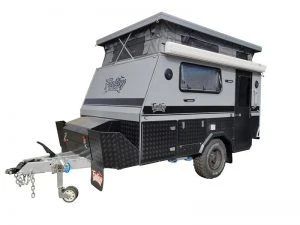
Pop Tops
Pop-tops are easy to tow. Small caravans like pop-ups are, generally, much lighter and easier to tow from A to B than larger types of caravans. You get much better fuel economy towing a pop-top because of the lower drag co-efficiency.
Pop-tops a doddle to store and manipulate by hand, particularly the smaller ones.
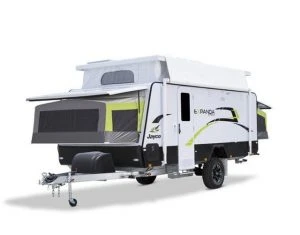
Expander
The merits of an expander caravan are similar to any standard or off-road caravan; however, they have the added bonus of a variety of pop-out areas that can be designed into the ceiling and walls. Essentially, pop these areas out at your destination, and you have a lot more interior space and utility at your disposal while being stationary. Just before you tow away, these areas are fold back into place, and away you tow again.

Off Road Caravan or Camper
The merits of having an off-road capable caravan or camper speak for themselves. They have been built tough and rugged so that you can tow them off-road. Obviously, you are going to need a bigger, torquier vehicle to tow this type of caravan/camper as they are heavier built and weigh more. Usually, these are towed by a decent 4×4 capable vehicle like a Land Rover, Toyota Land Cruiser, Ford Ranger, etc.

Camper Trailer
Similar to a pop-up caravan, except they fold out an array of attached tents. These are light and easy to tow. They can be designed for towing both on and off the road. They are cheaper to buy, as are pop tops.
Hybrids, EVs, and the City Environment

With the big push for clean air and protecting the environment, running a new hybrid vehicle is one way to make the gradual change from fossil fuels to electric more affordable and realistic as we head into a future of EVs.
A gradual change is key, so that everyone can adjust their budgets and business direction accordingly. And making the change gradual ensures that EVs can become more affordable to the masses. Have you heard of the ‘trickle-down effect’? This term refers to the reality of fashion trends flowing from the wealthy (e.g., politicians, mayors, doctors, directors, engineers etc.) to the less well-off or the working class (e.g., factory hands, beneficiaries, shop assistants, cleaners, farm workers, etc.) in society. This trickle-down phenomenon can be related to any new consumer product, especially when these products are first introduced into the market.
At the product’s initial introduction into the marketplace, it is costly and only affordable to the wealthy, but, as the product matures, and as time goes on, its price begins to fall so that it might become more widely affordable and thus adopted by the general public and the working class. One would assume that pure EVs will follow this kind of trend.
Right now, EVs are expensive to purchase new, especially when you want to have one of the EVs with all the status (e.g., Tesla, Porsche, Mercedes Benz). There are some cheaper options like the MG ZS EV, Hyundai IONIQ electric, the Nissan Leaf, and the Hyundai Kona electric. These cars can generally be had for less than $60k.
Currently, owning and operating a 100% EV would be an ideal option if you just wanted to hop between addresses inside the city boundary or maybe commute short distances to and from the urban jungle. However, throw in some intercity travel or long country drives, and the EV is simply left wanting. I’m aware that EV manufacturers are working hard to change this, to make their EVs capable of travelling much longer distances between recharges, as well as making the recharge time much quicker than it commonly is. As it stands today, Australia’s recharging infrastructure is in its infancy, and beyond the city boundary, even inside, it still has a long way to go before becoming seamless and brief.
If you live in and mostly travel inside one of our lovely Australian cities, owning or operating a vehicle that is capable of running on electric power for all or at least some of the time (more depending on you commute or travel patterns) would surely be an option if you aren’t doing so already. This would instantly help to improve the air quality of the congested city environment.
Who wouldn’t want to enjoy breathing cleaner air inside a city’s boundaries? We all would, right? But I can’t afford an EV because (a) it’s not practical and (b) you can’t afford one? If you relate to either of these truths, then you aren’t alone and are currently in the majority. So, what about a Hybrid then? Right now, hybrid vehicles do make a lot of sense. They are able to use their small electric motor for 20–30 km of inner city travel, thus making the city air cleaner and the environment better for all city dwellers and workers. However, when the commute includes distances beyond the city boundary, the petrol motor will happily take over transport duties and to get you where you want to go, recharging the electric motor’s battery in the process.
Of course, a bicycle or even walking is another option for inner city travel, particularly when it isn’t raining. If you are wanting a Hybrid vehicle or even an EV, then do have a look at some of our Hybrid and EV reviews or talk to some of our sales staff to see if there is a likable and affordable option out there for you.
Reasonably Priced Hybrid Vehicles (MG to Z)
In-between stages can sometimes get tricky. The next set of sit-ups before truly hitting your peak fitness regime. That gap year before study, or the six months prior to the new job contract starting. What about the EV world? We’re not capable of running a full fleet of EV cars yet, but maybe there’s an in-between vehicle that ticks all the right boxes before we go fully electric.
The truth is that the new hybrid vehicles are the best cars for this moment in time. They deliver the very best low fuel consumption figures and will also try to run pure electric as much of the time as is practical or possible.
Hybrids are great vehicles, usually well-priced, thus perfect for softening the blow to the wallet – there are some hideously expensive EVs available. Most desirable new EVs have price tags that, for most of us, will be well beyond our budget. So what hybrid vehicles are on the market for reasonable money? How much will they set you back when you buy new? And what sort of fuel consumption can you expect? Let’s have a look and see (MG to Toyota)…
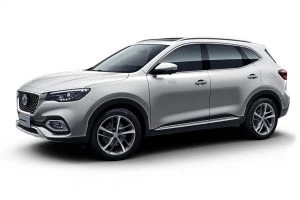
MG HS Plus EV SUV
Yes, a new and very fuel efficient Hybrid for less than $50k is possible, thanks to the snazzy MG HS Plus EV SUV. Nice to drive, comfortable, and with roomy interiors, loaded with technology, and five-star safe, these are a great hybrid buy. The MG HS Essence-spec plug-in hybrid joined the range in 2021 and uses a 119 kW/250 Nm 1.5-litre Turbo four driving the front wheels through a 7-speed dual-clutch gearbox. It boasts a strong presence among class leaders that include the Toyota RAV4, Mazda CX-5 and Nissan X-Trail. It comes with 5-star safety technology that includes autonomous emergency braking with pedestrian avoidance and satellite navigation as standard. MG says it takes about 7 seconds for the 0-100 dash, while returning a fuel efficiency that can be as low as 1.7 litres/100 km or more commonly up to 5.7 litres/100 km.

MINI Countryman Cooper SE Classic SUV
The Countryman Cooper SE Classic is a cute three-cylinder plug-in hybrid with electrically-assisted AWD. BMW indicates a combined cycle as low as 2.4 litres/100 km but may look more like 4.5 litres/100 km for most of the time. Combining a 1.5-litre Turbo 3-cylinder ULP petrol (100 kW/220 Nm) and a 7.6 kWh lithium-ion plug-in battery, this combined system equates to an output of 165 kW of power and 385 Nm of torque. The small MINI sees off the 0-100kmh sprint in 6.8 seconds and is a lot of fun to drive. The MINI Countryman’s roomy interior is backed up by 450 litres of luggage space behind the back seats, growing to 1275 litres if the seats are folded down.
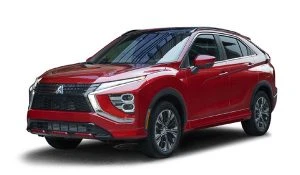
Mitsubishi Eclipse Cross PHEV ES
From around $51k you can get one of these new. The 2022 Mitsubishi Eclipse Cross PHEV ES is a very stylish small SUV with very low running costs. Aspire and Exceed models are also available. Comfortable and loaded with tech and safety, the Mitsubishi Eclipse Cross PHEV makes a lot of sense. Even the top of the range Exceed with all of the bells and whistles can be bought for under $60k. Mitsubishi indicates as low as 1.9 litres/100 km is possible, though real world figure of 3.7–4.0 litres/ 100 km is still impressively low in the real world. Boot space is around 350 litres, and 0-100 km/h takes about 10.5 seconds.
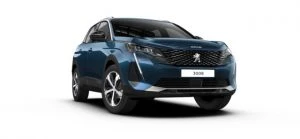
Peugeot 3008 GT Sport Plug-in Hybrid AWD SUV
For less than $90k you can have one of these very stylish hybrids. Boasting a 1.6-litre Turbo ULP engine and electric power that combines to a maximum of 222 kW, this sporty SUV uses an 8-speed automatic. Thanks to twin electric motors driven by a 13.2 kWh lithium-ion battery pack, the Peugeot 3008 PHEV enables zero-emissions driving for up to 60km. Its 222 kW power output and a 6.5-second 0-100 km/h acceleration time makes this one of the fastest SUVs in its class. It is also 4×4 capable, making it a highly desirable vehicle for undertaking light off-road terrain. Gorgeous full-grain Nappa leather-appointed seats with grey stitching, nicely-integrated twin digital screens (a 10.0-inch central touch-screen with satellite navigation and a 12.3-inch driver display), real world fuel efficiency likely be around 5–5.5 litres/100 km (but much less than this is possible), and you have yourself quite a vehicle. Peugeot reckons the 3008 PHEV can achieve a combined fuel consumption figure of 1.6 litres/100 km with CO2 emissions of 36.4g/km. Boot space is 395 litres.
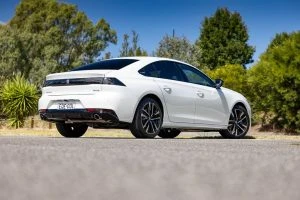
Peugeot 508 GT Plug-in Hybrid
From around $84k one of these extremely stylish cars can be yours. Its petrol-electric hybrid powertrain allows the svelte sedan to drive up to 55 km (WLTP) in silence, by switching off the combustion engine and using only its electric motor. It’s hard not to be impressed with the car’s looks and style. Inside, the leather seats, the dashboard design, the sporty cockpit layout, and the sheer attention to detail is very impressive. A 12.3-inch iCockpit digital driver’s display, a 10.0-inch central touch-screen, a 10-speaker sound system, dual-zone automatic climate control, five-star safety, it’s all there! 0-100 km/h takes around 8.2 seconds, while the Plug-in Hybrid system uses a 1.6-litre turbo-petrol four-cylinder engine developing 133 kW at 6000 rpm and 300 Nm at 3000 rpm to get the job done. The official combined-cycle fuel consumption figure is 1.8 litres/ 100 km, but to achieve that would require frequent charging – something that’s not always possible in the real world. Expect around 5.0 to 6.5 litres/100 km combined. Boot space is 487 litres.
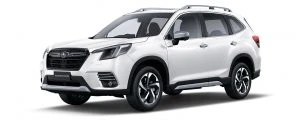
Subaru Forester Hybrid
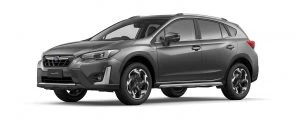
Subaru XV Hybrid
The fifth generation of Subaru’s mid-size, all-AWD Forester SUV was updated in late 2021 with a new look, plus refinements to steering and suspension and a revised instrument panel. The smaller XV Hatch also uses similar tech. Expect around 6-7 litres/100 km for the 2.0-litre boxer-based mild hybrid powerplants. Off-road is no problems at all for the Forester or XV and safety is off the top shelf. All Foresters and XV Hybrids get active cruise control, blind-spot monitors, lane-change assist, “active” LED headlights and rear cross traffic alert. The Forester offers truly generous passenger space and luggage capacity (422 litres expanding to 1768 litres with rear seats folded). The XV has 340 litres behind the rear seats. Both are nice to drive adventure seekers.
Toyota Hybrids
Almost every model on the Toyota showroom floor can be a hybrid. There are so many that I’ll list them all here in picture form.

Toyota C-HR Hybrid SUV from $42k.
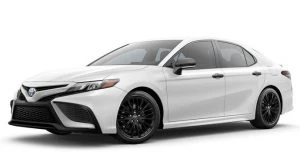
Toyota Camry Hybrid Sedan between $38-52k.
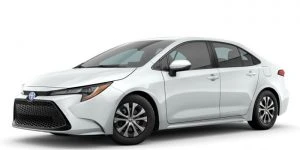
Toyota Corolla Hatch and Sedan between $32-40k.
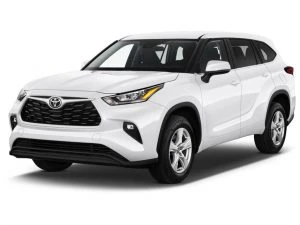
Toyota Kluger SUV between $60-83k.
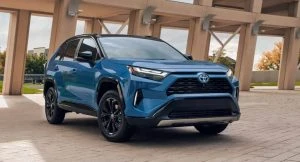
Toyota RAV4 Hybrid
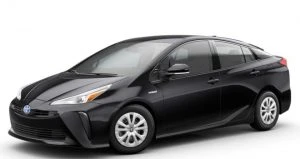
Toyota Prius between $43-51k.
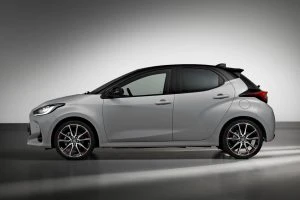
Toyota Yaris Hybrid
These are truly excellent hybrid vehicles, and, if you don’t know where to start, Toyota is a great place. Reliability, practicality, some of the best hybrid economy figures (usually very achievable: 3.5 to 5.5 litres/100 km), and excellent 5-star safety are all reasons why Toyota Hybrids are so good. They are also very competitively priced right across the board from the little Yaris Hatch to the larger Camry Sedan or Kluger SUV. Get ready to be impressed.
Be an in-betweener and gain some of the Hybrid benefits.